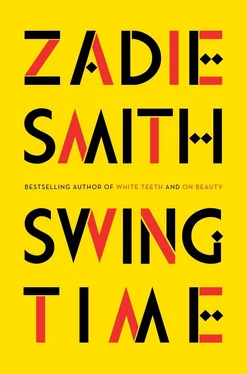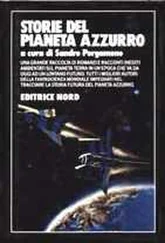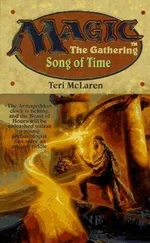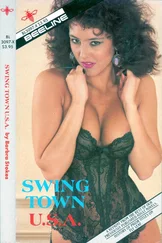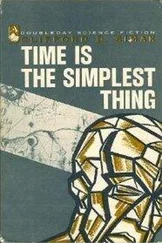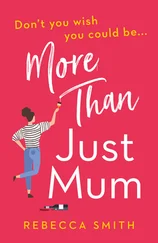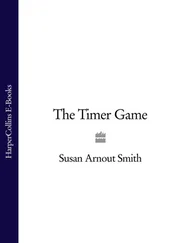Kramer came back out with two tickets, great seats in the second row. In lieu of dinner I bought myself a huge bag of chocolates, of the kind I rarely got to eat, Aimee considering such things not only nutritionally fatal but clear evidence of moral weakness. Kramer bought two large plastic tumblers of bad red wine and the program. I searched through it but couldn’t find Tracey. She wasn’t where she should be in the alphabetical list of the cast, and I started to worry that I was suffering from some kind of delusion, or had made an embarrassing error. I flicked the pages back and forth, sweat breaking out on my forehead — I must have looked crazy. “You OK?” asked Kramer. I was almost at the end of the program again when Kramer pressed a finger to a page to stop me turning it.
“But isn’t that your girl?”
I looked again: it was. She’d changed her common-sounding, barbarous last name — the name by which I’d always known her — to the Frenchified and, to me, absurd Le Roy. Her first name, too, had been adapted: now it was Tracee. And in the picture her hair was straight and glossy. I laughed out loud.
Kramer looked at me curiously.
“And you’re good friends?”
“I know her very well. I mean, I haven’t seen her in about eight years.”
Kramer frowned: “See, in guy world we’d call that an ‘ex-friend,’ or better still: ‘a stranger.’”
The orchestra started up. I was reading Tracey’s bio, parsing it furiously, in a race against time before the house lights dimmed, as if the visible words were hiding another set, with a far deeper meaning that required decoding and would reveal something essential about Tracey and the way her life was now:
TRACEE LE ROY
CHORUS/DAHOMEY DANCER
Theater Includes:
Guys and Dolls (Wellington Theater); Easter Parade (UK tour); Grease (UK tour); Fame! (Scottish National Theater); Anita, West Side Story (workshop)
If it was the story of her life it was disappointing. It lacked the ubiquitous accomplishments of all the other bios: no TV, no film, and no mention of where she’d been “trained,” which I took to mean she’d never graduated. Apart from Guys and Dolls , there was no other West End work, only those bleak-sounding “tours.” I imagined small church halls and rowdy schools, empty matinees on the stages of abandoned cinemas, minor local drama festivals. But if some part of all this pleased me, another part, equally large, was incensed at the idea that this bio of Tracee Le Roy could be fairly compared — by any of the people in the theater presently reading it, or by any of the actors in the cast — with any of these other stories. What did Tracee Le Roy have to do with these people? With this girl right next to her in the program, the girl with the endless biography, Emily Wolff-Pratt, who had studied at RADA, and who couldn’t know, as I did, the huge statistical unlikelihood of my friend standing on this stage, or any stage at all — in any role, in any context — and who perhaps had the temerity to think that she , Emily Wolff-Pratt, was a true friend of Tracey’s, just because she saw her every night, just because they danced together, when in fact she hadn’t the slightest idea of who Tracey was or where she had come from, or how much it had cost her to get here. I turned my attention to Tracey’s headshot. Well, I had to admit it: she’d turned out rather well. Her nose didn’t seem so much of an outrage any more, she’d grown into it, and the cruelty I’d always detected in her face was obscured by the megawatt Broadway smile she had in common with every other actor on the page. The surprise wasn’t that she was pretty, or sexy — she had already been in possession of these attributes as a very young teenager. The surprise was how elegant she had become. Her Shirley Temple dimples were gone, along with any hint of the provocative fleshiness she’d carried around as a child. It was almost impossible for me to imagine her voice, as I’d known it, as I remembered it, coming out of this pert-nosed, slick-haired, delicately freckled creature. I smiled down at her. Tracee Le Roy, who are you pretending to be now?
“Here we go!” said Kramer, as the curtain parted. He placed his elbows on his knees, his hands in two childish fists under his chin and made a facetious face: I am agog.
Stage left, a Southern oak, draped in Spanish moss, beautifully rendered. Stage right, the suggestion of a Mississippi town. Center stage, a showboat in harbor, the Cotton Blossom. Tracey — along with four other women — was first on stage, appearing from behind the oak, holding her broom, and behind her came the men with their various hoes and spades. The orchestra played the opening bars of a song. I recognized it as soon as I heard it, the big chorus number, and at once felt a panic, without knowing why, it took a moment, until the music itself prompted the memory. I saw the whole song laid out on the old sheet music, and remembered, too, how I’d felt the first time I saw it. And now the lyrics, shocking to me as a child, formed in my mouth, in perfect time with the orchestra’s preamble, I remembered the Mississippi, where the “niggers” all work, where the white people don’t, and I gripped the armrest and felt an urge to rise up out of my seat — it was like a scene in a dream — with the idea of stopping Tracey before she even started, but as soon as I’d had the thought it was already too late, and over the lyrics I’d thought I knew some new words had been substituted, but of course they had — no one had sung the original words for years and years. “ Here we all work… Here we all work …”
I sank back into the seat. I watched Tracey expertly maneuver her broom this way and that, giving it life, so that it seemed almost another human presence on the stage, like the trick Astaire pulls, with that hat rack, in Royal Wedding . At one point she was perfectly aligned with the image from the poster, broom in the air, arm outstretched, kinetic joy. I wanted to pause her there in that position for ever.
The real stars arrived on stage, to begin the drama. In the background Tracey swept the front step of a general store. She was stage left from the main characters, Julie LaVerne and her devoted husband, Steve, two cabaret actors who work together on the Cotton Blossom and are in love. But Julie LaVerne is soon revealed, just before the interval, to be Julie Dozier, that is, not a white woman, as she has always pretended, but really a tragic mulatto, who “passes,” who convinces everybody, including her own husband, until the day she’s found out. At which point the couple are threatened with prison, for their marriage is illegal under the miscegenation laws. Steve cuts Julie’s palm and drinks a little of her blood: the “one drop rule”—they’re both Negroes now. In the dim light, in the middle of this ridiculous melodrama, I checked the bio of the actress playing Julie. She had a Greek last name and was no darker than Kramer.
During the interval I drank a lot, and too quickly, and talked at Kramer relentlessly. I was leaning against the bar, blocking other people’s route to the bar staff, waving my hands around and ranting about the injustice of the casting, of how few roles there were for actors like me and even when such roles did exist you couldn’t get them, somebody always gave them to a white girl, for even a tragic mulatto apparently wasn’t quite fit to play a tragic mulatto, even in this day and—
“Actors like you?”
“What?”
“You said: actors like me .”
“No, I didn’t.”
“Yeah, you did.”
“My point is: that role should be Tracey’s.”
“You just said she can’t sing. From what I’ve seen, it’s pretty much a singing role.”
Читать дальше
